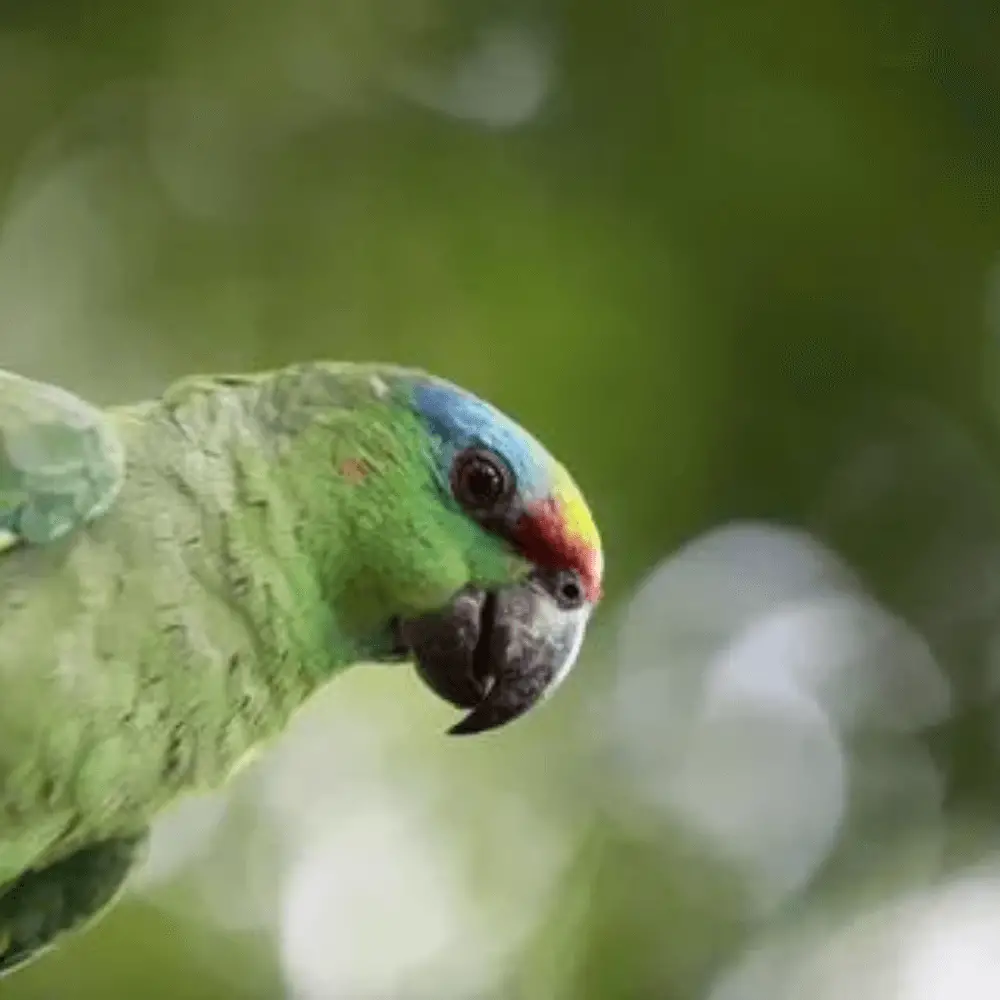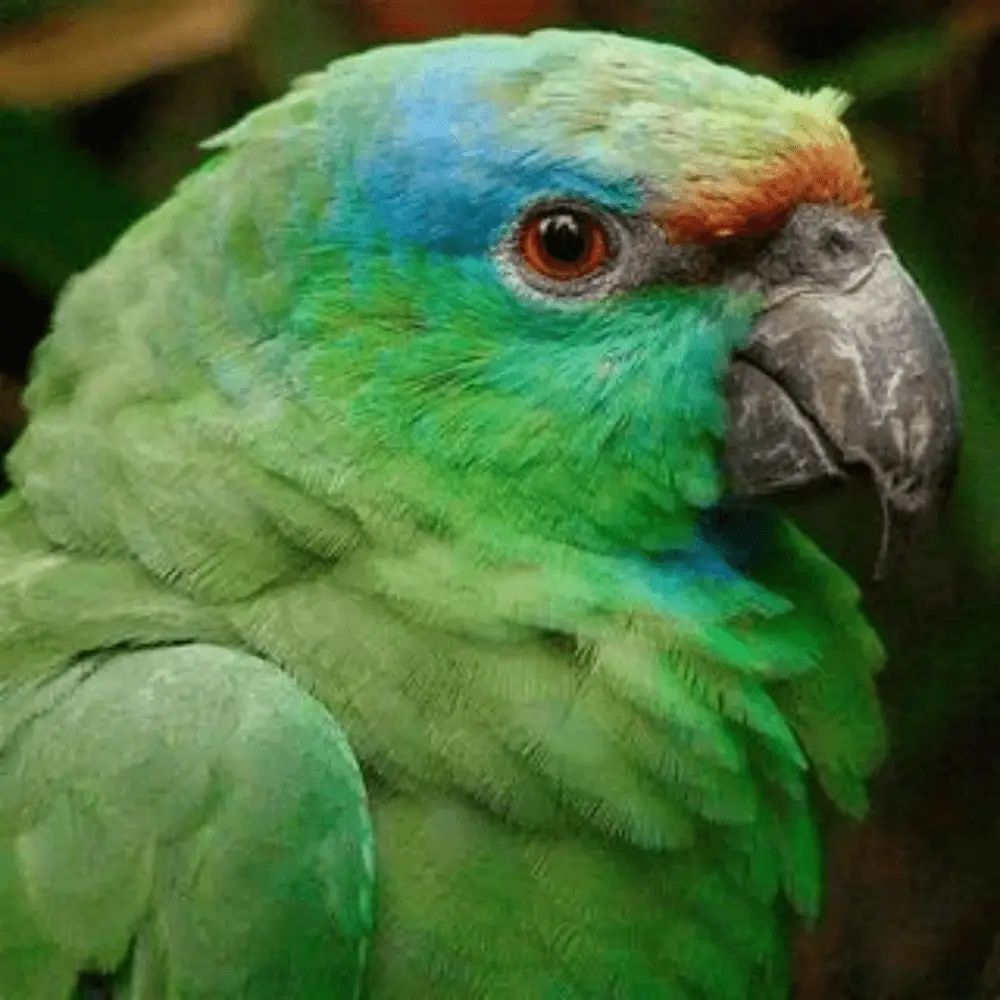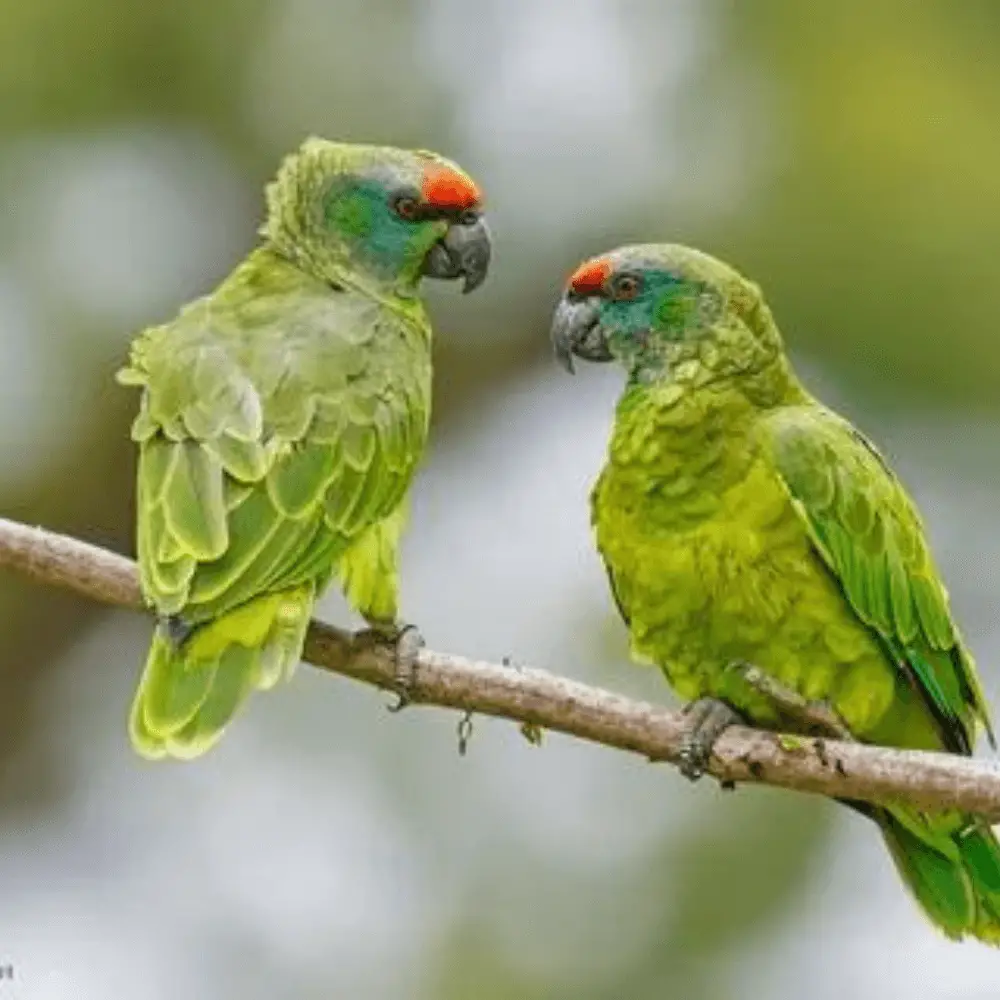Festive Amazon: 38-41cm. Tall and 370g. weight. (Amazona festiva) has green cheeks and neck sides with strong blue scattering; lores and its end border in front Red; feathers above and behind them blue eyes; Front rather yellow-green.
Crown Green but darker; Nape feathers Green with a dark terminal stripe. Mantle, collars, upper back Yes upper tail-coverts dark green; RUMSTECK and most depression bright red back. Purple-blue primary coverts. Other coverts dark green.
The carpal edge of the wing and the margin of the outer webs of the primary are blue; internal networks are black; secondary with hints of dark blue color, secondary more green interiors.
Underwing-covert green. Chin Yes throat the blues; Chest Yes belly Green; underwing coverts yellow-green. Tail green, one paler yellowish green at the tip; Traces of red at the base of some feathers.
The woodpecker’s color is cuerno-chestnut; Iris Yellow, and dark gray legs.
Immature have dark irises and show less intense color in the head. His back low is practically green; some of the outer tail feathers have a red base.
- Order : Psittaciformes
- Family: Psittacidae
- Genus: Amazona
- Scientific name : Amazona festiva
- Quote : ( Linnaeus , 1758)
- Protonimo : Psittacus festivus
-
Brazil, Peru, Guyana, Colombia, Bolivia, Ecuador, Venezuela
-
Excitable
-
40 to 50 years
-
38 41 cm.
Subspecies

Amazona festiva bodini
- ( Finsch, 1873) – He has purple and red blue broadband in the front, behind the eyes.
- This is from Colombia in the basin of the Orinoco de Venezuela
Amazona festiva festiva
- ( Linnaeus,1758) – The nominal.
- The face value.
Habitat

The Festive Amazon frequent primary and secondary forests of the plains, mainly Várzea, forest swamps, and river islands, also igapó (permanently flooded forest), usually found near water and can avoid forests on the ground, although also reported in gallery forests and savannahs with scattered trees.
Observed in cocoa plantations in Brazil. At an altitude of 500 meters in Colombia Yes 100 meters in Venezuela. Most often in small flocks with large gatherings sometimes reported. Flocks of up to 50 birds are on Leticia between the months of May-June. They tend to congregate in the afternoon and throughout the night in community lodges.
Reproduction
Festive Amazon nests in hollows and dead trees from May to June.
A breeding pair averages 3 eggs in each clutch and the incubation period is usually around 28 days.
Food
Usually in the many herds, little is known of his power.
Distribution

The Festive Amazon is located in northern South America mainly under two large isolated populations in the basins of the Amazona Yes Orinoco.
A population occupies the northwest of Guyana (very few records) Yes Venezuela in the south Apure in the Meta river and a half Orinoco until the Delta Amacuro.
The second extends from the lowland regions of the east ( Colombia including the low part of the Casanaré River, lower meta river Oui Rivière Vaupes southwards through the Amazona of Ecuador (where birds are reported in the Napo River ).
but few recent records) and northeast of Peru, and further east through western Brazil, from Branco River, Black River, and down the Madeira River to the East of the Amazon Basin in AmapáYes For and in the mouth of the Amazona in the Ilha Mexiana (where its status is uncertain).
Probably resident in its upper part, although sporadic birds are on the edge of its range in Ecuador yes Guyana, They suggest seasonal movements outside their range, obviously low in Guyana and a local Venezuela, Ecuador Yes Peru, but more common in parts of the western Amazon in Brazil and locally it Amazona more common in parts of Colombia (eg by Leticia ).
Continued to trade in live parrots in parts of its range (e.g., Peru ). Its swampy habitat is not in high demand for agriculture, which does not appear to be a large-scale population of apparent contraction.
Endangered
• Current IUCN Red List Category: Least Concern.
• Demographic trend: Degressive.
The size of the world population has not been quantified, but this species is described as “ Rare ”
Therefore, is considered to be of Least Concern by BirdLife International and the IUCN, Although it was classified as Vulnerable in 2012, due to patterns of deforestation in the Amazon rainforest and susceptibility to hunting, predicts that the population declines rapidly over the next three generations.
Festive Amazon in captivity
Very rare in captivity.
His temperament is very excitable. Males tend to be aggressive. Good to excellent imitator.
It feeds on sunflower seeds or other provided, fruits, vegetables, etc…
SOURCE: paws4caws
Related article:
- Red-crowned amazon
- Blue-cheeked Amazon
- Diademed Amazon
- Blue fronted amazon
- Amazon parrot for adoption
- Vinaceous-breasted amazon
- White-fronted amazon
- Lilac-crowned amazon
- Red-lore amazon
- Yellow-crowned amazon
- Double yellow headed amazon
- Green-cheeked Parrot
- Yellow-naped Amazon
- Hispaniolan Amazon
- Red-necked amazon
- Puerto Rican amazon

